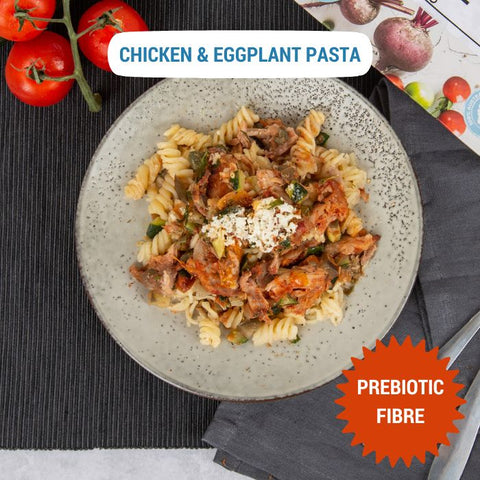Including tips for those following a gluten free and / or Low FODMAP diet.
What’s all the fuss about prebiotic fibre?
Following on from last week where we talked about the different types of fibre and our health, the week Marnie explores the very important prebiotic fibre.
Many of us have heard the term ‘prebiotic’ lately, and essentially it means ‘food for our good gut bacteria’. These type of fibres are fermented by the ecosystem of bacteria living in our large bowel (our gut microbiome), and promote the growth of beneficial strains like Lactobacillus and Bifidobacteria.
Eating foods high in prebiotic fibre is shown to improve the overall health and diversity of our gut microbiome, which has important flow on effects to our health in many ways.
- A well balanced and well fed gut microbiome can reduce chronic inflammation, and inflammatory conditions like heart disease.
- The health of our gut can even influence our mood, mental health and chance of developing dementia.
- When good gut bacteria consume prebiotics, they also produce short chain fatty acids (e.g. butyrate) that keep our gut lining cells strong and healthy.
Prebiotic fibre is found in various types of soluble, insoluble fibre and resistant starch fibre. More recently, antioxidants in food have also been included under the banner of prebiotics, as they have been shown to feed good types of gut bacteria. Good news here: this includes polyphenols in tea, red wine, chocolate and Extra Virgin Olive Oil!
Prebiotics are undeniably good for us (and no-one likes a party pooper), but a potential downside of high prebiotic fibre foods is that many are also high FODMAP (rapidly fermented), and can be a bit problematic for those with functional gut issues like IBS. If this is you, it’s still a good idea to include lower FODMAP prebiotic foods, and test out higher FODMAP prebiotic foods in small doses to see how they go. You might also benefit from taking a specific fibre supplement, e.g. PHGG, for it’s low FODMAP, prebiotic effect.
Here is a list of some gluten free foods high prebiotic fibre you may like to include in your diet ( * = lower FODMAP options ).
- Artichokes (Jerusalem and globe varieties, including marinated and pickled versions).
- Asparagus, beetroot, cabbage* and broccoli*
- Apples, custard apples, green bananas*, pomegranate Dried fruit e.g. dates and figs
- Potato salad*, fried rice*, GF pasta salad* and GF pasta* (which are cooked and then cooled will develop resistant start, which also remains stable during reheating)
- Pickled vegetables like sauerkraut, kim chi
- Tinned, rinsed legumes e.g. lentils*, chick peas* (1/4 cup)
- Linseed* - seeds and ground linseed meal
- Garlic, onion and leek - raw, cooked and pickled
- Nuts, especially cashews, hazelnuts*, pecans*, and pistacchios
- Prebiotic fibre supplements eg. PHGG*, KFibre*

How does this all relate to those on a gluten free diet?
At the end of the day, our body thrives when we eat lots of different types of fibre. When following a gluten free diet, high fibre plant foods like wheat, rye, oats and barley are taken out, but we can easily make with high fibre gluten free foods.
The best way to look after your gut on a gluten free diet is by eating a rainbow of different colours (don’t forgot the antioxidants), and a lots of variety of fruits, vegetables, legumes, nuts, seeds and GF grains and cereals.
As always, consult with an experienced Accredited Practising Dietitian for personalised advice about fibre and your health.
In case your missed our previous articles on Fibre - check them out here:
- Tips to Boost your Fibre Intake
- What is fibre and how much do we need?
- The different types of fibre and our health
